TrucksNL so far includes trucks that must be driven by drivers. But imagine that no driver is needed anymore. You think these are future stories, but at Scania and Volvo this is already possible! In this article you can read more about what will change for trucks in the future.
In this article you’ll read:
Trucks without driver
Automation is something that has developed greatly over the years, including in trucks. For example, there’s already a truck that no longer requires a driver.
AXL from Scania
On September 24, 2019, Scania released the driverless truck ‘AXL’. Scania already had self-driving trucks, but there was always room for a driver there, so emergency interventions were possible. The AXL is especially suitable for mines and other large construction sites, as these areas are easy to control.
This photo shows what the AXL will look like
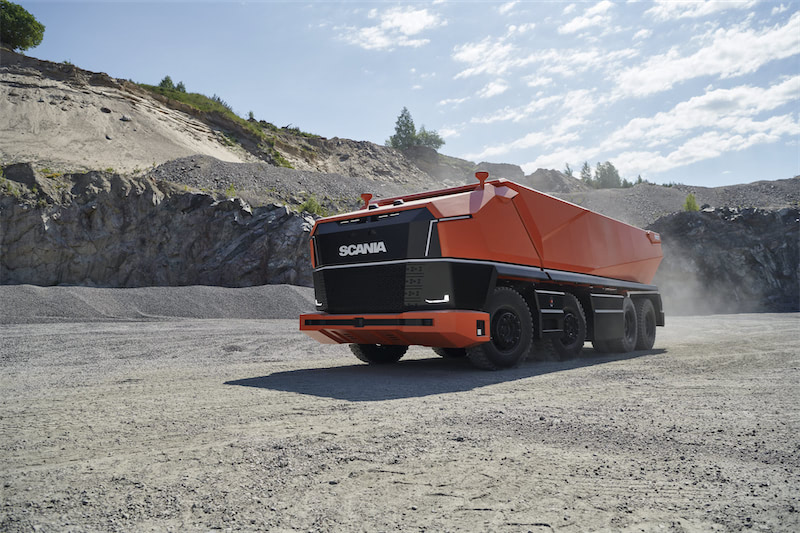
Vera from Volvo
Volvo was a little earlier with a self-driving truck than Scania. In 2018, they released ‘Vera’. This model looks more like a car than a truck, but thus serves as a truck. This vehicle has fewer emissions, less fuel consumption and drives very quietly. On the top is a ‘fifth wheel’ where heavy cargo can be put on. Vera can be used especially for repetitive routes/simple tasks and on short distances where large volumes of freight have to be transported.For example in harbours, factories and logistics centers.
This photo shows Vera being used to transport containers from Swedish logistics company DFDS to the port
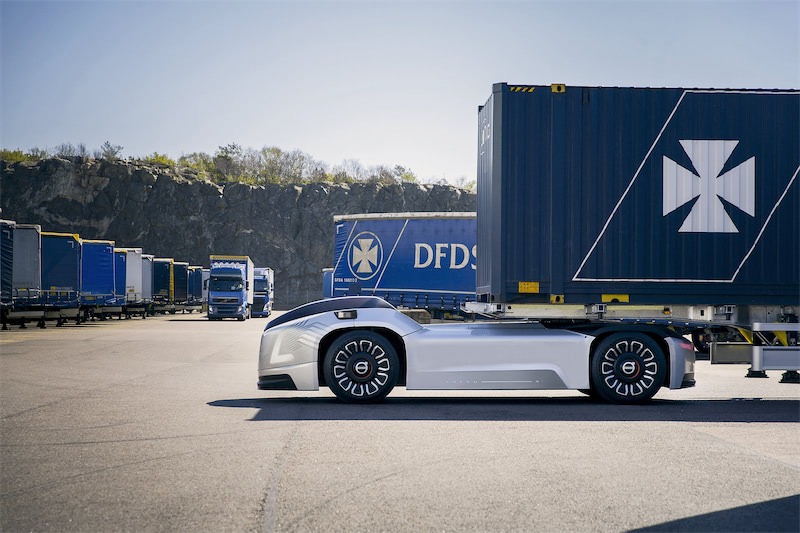
AXL is a concept to date, the Vera has already been released. For both vehicles, due to safety testing, the trucks are/will be constantly monitored. Furthermore, the Vera is electric and the AXL will run on renewable biofuel.
Electric trucks
Trucks in the Netherlands are polluting less and less. The Central Bureau of Statistics has shown that 58% of all truck trips in the Netherlands are driven with a Euro 6 engine. This is the newest and relatively cleanest combustion engine. In addition, more and more brands are introducing electric trucks, with the aim of reducing fuel consumption and CO2 emissions.
Volvo FL Electric and FE Electric
Volvo introduced the first fully electric truck in 2018: the ‘FL Electric’. This truck is aimed at urban use. It can be used for waste collection and urban distribution, has a GVW of 16 tons, a range of up to 300 km and the battery capacity is 100-300 kWh.
After the FL Electric, Volvo came out with the ‘FE Electric’. This truck is also for use in cities. It has a GVW of 27 tons, a range of 200 km and the battery capacity is 200-300 kWh.
This photo shows the Volvo FL Electric
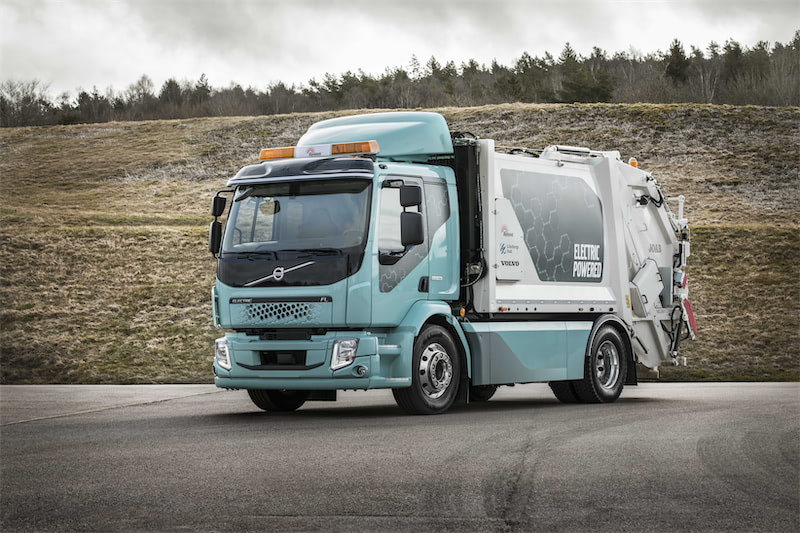
DAF LF Electric, CF Electric and CF Hybrid
The DAF LF Electric is deployable in cities, has a GVW of 19 tons, a range of 222 km and the battery capacity is 222 kWh.
The DAF CF Electric can also be used in urban areas. The GVW of this truck is 37 tons, the range is 100 km and the battery capacity is 170 kWh. What’s special about this version is that the battery can be fast charged within 30 minutes or fully charged in 1.5 hours. With other electric trucks, such as Volvo’s, fast charging takes 1 to 2 hours and full charging about 10 hours.
Finally, the CF Hybrid, this truck can be used not only in urban areas but also for longer distances outside the cities. The CF Hybrid is a combination of electric and diesel. The electric engine has a battery capacity of 85 KWh and a range of 30 to 50 kilometers. Full charging takes 30 minutes and fast charging 20 minutes (up to 80%). Thanks to the ‘e-PTO’ function, the CF Hybrid can also be used as a refrigerated semi-trailer truck. Outside urban areas, energy is recovered during braking or going downhill and when using cruise control. This recovered energy can be used by the electric motor in combination with the diesel engine, thus reducing fuel consumption.
This photo shows the DAF CF electric

Tesla Semi
Tesla’s electric truck, ‘Semi’, was unveiled in late 2017. According to predictions, the Tesla Semi will appear on the market in 2022, but you can already reserve one now. Reservation fees are around €17,000 though and the truck itself costs around €130,000 to €170,000, depending on the type of range.
The Tesla Semi is available in a range of 475 or 800 km. In addition, it can still drive 100 km/h on a 5% incline. The speed of 100 km/h on flat road (with full load) is already reached in 25 seconds. Furthermore, the Tesla Semi has four independent engines.
The Tesla Semi also features advanced Autopilot, the driver’s seat is in the center of the cab and the truck has a low center of gravity that protects against tipping.
Tesla claims that the cost of electricity is half the cost of diesel, so the fuel savings could be as much as $200,000. This would mean that the Tesla Semi would pay for itself in 2 years.
In this image you can see what the Tesla Semi will look like

Electric new and used vehicles can also be offered on TrucksNL. We predict a growth in this offer on TrucksNL.
Focus on truck safety
Every day there are a number of accidents on the roads in the Netherlands, sometimes involving trucks. The emphasis on safety is therefore becoming increasingly important, and with good reason. But what can we expect in the future in terms of improved truck safety techniques?
MirrorCams eand Sideguard Assist from Mercedes-Benz
Mercedes-Benz is the first truck in its Actros model to no longer have rear-view mirrors. To enhance safety, the Actros has MirrorCams instead of rear-view mirrors: cameras on the sides of the truck that act as mirrors. MirrorCams allow you to see on large screens from inside the truck what’s happening on the road next to it and behind it.
In addition, Mercedes-Benz has a blind spot assistant called Sideguard Assist. The Sideguard Assist gives a signal if someone is cycling or walking in the blind spot of the truck. On the large MirrorCams screens, you’ll then see a yellow triangle for the 1st alarm phase or a red triangle for the risk of collision.
This photo shows the MirrorCams in the Mercedes-Benz
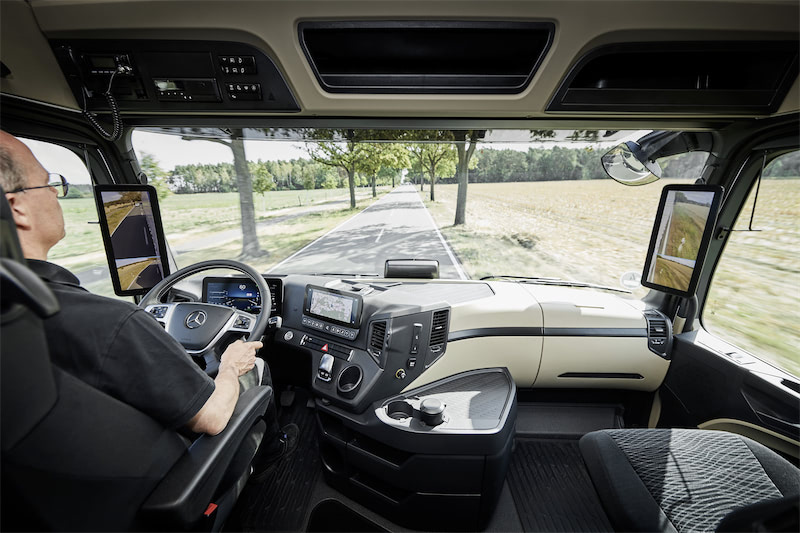
Driver Support, aandachtsondersteuning en Electronic Stability ProgrDriver Support, Attention Support and Electronic Stability Programme at Scania
Scania has different safety techniques:
With Driver Support, the driver is shown on his dashboard how shifting, braking and accelerating affect safety on the road.
Attention Support helps the driver keep his attention on the road. An alert appears on the dashboard when the driver needs to take a break. The warning is based on the driver’s driving behavior. If he drives too much unintentionally over the lines on the road and thus gets in the way of other traffic or if he makes too many unusual steering movements, a notification to take a break appears. In addition, the message appears if the driver has been driving for a long time. This is because a record is kept of the driver’s driving times and rest periods.
Furthermore, the Electronic Stability Programme (ESP) ensures that in dangerous situations each wheel independently brakes if the truck is over- or under-steered.
Emergency brakes
Emergency brakes on trucks are also getting better. This allows trucks to brake at the last moment. As shown in this video, Volvo came up with a powerful emergency brake back in 2013.
This photo shows the emergency braking system from Volvo
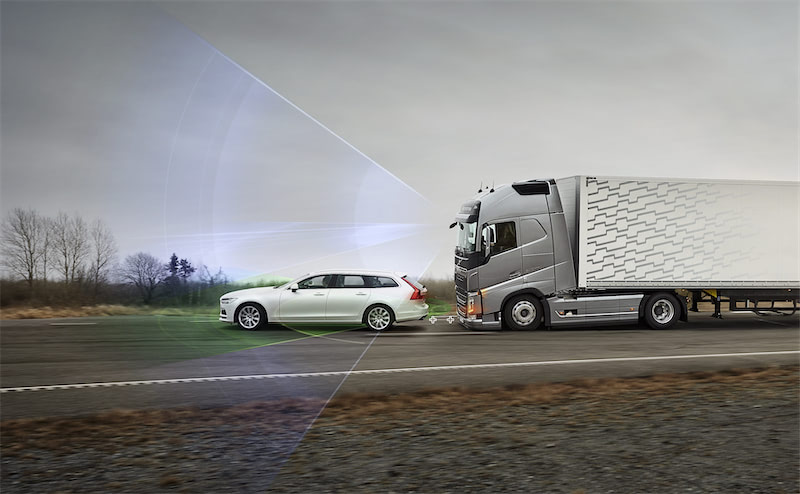
Technologies to improve the safety and performance of trucks are constantly evolving. If technologies that are already available on some trucks, such as Mercedes-Benz MirrorCams or self-driving trucks such as those of Volvo and Scania, prove a success, it’s possible that in the future all trucks will have MirrorCams instead of rear-view mirrors and that there will no longer be a need for a driver. Let’s hope that there will always be room for the driver in the truck, so that automation doesn’t go too far. We’ll see what (more) truck development is going to do in the future.
Sources (in Dutch):
- Sustainability using telematics: 4 helpful tips - 24 February 2023
- What should you look for when buying a trailer? - 8 February 2023
- Are you taking advantage of your earned rest time? - 15 September 2022

